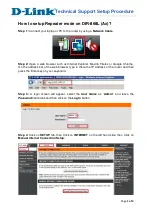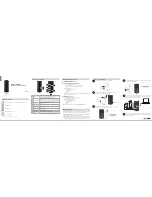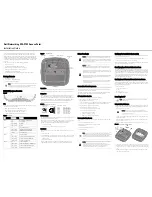
Wireless
Radio
Cisco Small Business WAP121 and WAP321 Wireless-N Access Point with PoE
66
5
If the packet being transmitted is equal to or less than the threshold,
fragmentation is not used. Setting the threshold to the largest value (2,346
bytes, which is the default) effectively disables fragmentation.
Fragmentation involves more overhead both because of the extra work of
dividing up and reassembling of frames it requires, and because it increases
message traffic on the network. However, fragmentation can help improve
network performance and reliability if properly configured.
Sending smaller frames (by using lower fragmentation threshold) might help
with some interference problems; for example, with microwave ovens.
By default, fragmentation is off. We recommend not using fragmentation
unless you suspect radio interference. The additional headers applied to
each fragment increase the overhead on the network and can greatly reduce
throughput.
•
RTS Threshold
—The Request to Send (RTS) Threshold value. The valid
integer range must be from 0 to 2347. The default is 2347 octets.
The RTS threshold indicates the number of octets in an MPDU, below which
an RTS/CTS handshake is not performed.
Changing the RTS threshold can help control traffic flow through the WAP
device, especially one with a lot of clients. If you specify a low threshold
value, RTS packets are sent more frequently, which consumes more
bandwidth and reduces the throughput of the packet. However, sending
more RTS packets can help the network recover from interference or
collisions that might occur on a busy network, or on a network experiencing
electromagnetic interference.
•
Maximum Associated Clients
—The maximum number of stations allowed
to access this WAP device at any one time. You can enter an integer between
0 and 200. The default is 200 stations.
•
Transmit Power
—A percentage value for the transmit power level for this
WAP device.
The default value of 100 percent can be more cost-efficient than a lower
percentage because it gives the WAP device a maximum broadcast range
and reduces the number of access points needed.
To increase the capacity of the network, place WAP devices closer together
and reduce the value of the transmit power. This helps reduce overlap and
interference among access points. A lower transmit power setting can also
keep your network more secure because weaker wireless signals are less
likely to propagate outside of the physical location of your network.
















































